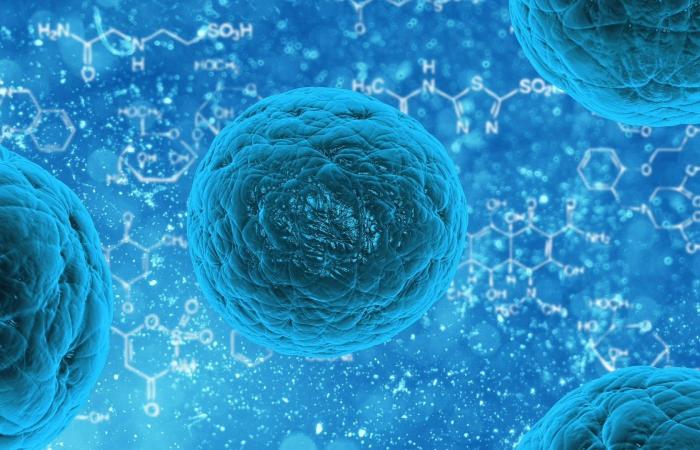In a recent article with results, which University of Massachusetts Amherst lead author Eric Strieter describes as “incredibly surprising,” he and his chemistry lab group report that they discovered how an enzyme called UCH37 regulates a cell’s waste management system.
Strieter says, “It took us eight years to find out, and I am very proud of the work. We had to develop many new methods and tools to understand what this enzyme does. ”
As he explains, a very large protease called a proteasome is responsible for breaking down the vast majority of proteins in a cell. It can consist of up to 40 proteins. It has been known for more than 20 years that UCH37 is one of the regulatory enzymes associated with the proteasome, he adds, “but no one understood what it did.”
It turns out that the crux of the whole process is how intricate modifications can be in a tiny protein called ubiquitin. “In addition to modifying other proteins, ubiquitin modifies itself, which leads to a multitude of chains. Some of these chains can be highly branched. We have found that UCH37 is removing branch points from chains, allowing mining to continue. ”
Write this week in Molecular cell, he and first author and Ph.D. Candidate Kirandeep Deol, who directed and conducted the experiments with co-authors Sean Crowe, Jiale Du, Heather Bisbee and Robert Guenette, discussed how they answered the question. The work was supported by the National Institute of General Medical Sciences at the NIH.
This advancement could eventually lead to a new cancer treatment, says Strieter, because cancer cells need the proteasome to grow and multiply. “Many cancer cells are essentially dependent on the proteasome function,” he emphasizes. “Its cells produce proteins at such a rapid rate that mistakes are made, and if these are not corrected, the cells cannot function. Since UCH37 helps clear proteins, it could be a useful therapeutic target to supplement the proteasome inhibitors that have already been successful in the clinic. ”
To begin her long-term process, Strieter said, “We had to find a way to create a multitude of ubiquitin chains that represent the potential diversity in a cell. With this new library of ubiquitin chains we were able to query the activity of UCH37 in a controlled environment. This series of experiments gave us the first indication that this enzyme does something unique. ”
Another new method they developed uses mass spectrometry to characterize the architecture of ubiquitin chains in complex mixtures. “This enabled us to see that the activity that we discovered with our substrate library was also present in a more heterogeneous mixture,” says Strieter. Finally, the chemists used the CRISPR gene editing tool to remove UCH37 from cells to measure the impact of UCH37 on proteasome-mediated degradation in vitro and in cells.
This technique led to another surprise. “Instead of acting as expected and resisting the breakdown process, it turned out that UCH37 removed junction points from ubiquitin chains to help break down proteins,” says Strieter. “You would think that removing the signal for the degradation would affect the degradation,” he adds, “but it didn’t work that way.”
In future experiments, Strieter and colleagues hope to further investigate the degradation process and learn in more detail how UCH37 regulates cell function.
Proteasome phase separation for destruction
More information:
Kirandeep K. Deol et al., Proteasome-Bound UCH37 / UCHL5 Debranches Ubiquitin Chains to Promote Degradation, Molecular cell (2020). DOI: 10.1016 / j.molcel.2020.10.017
Provided by the University of Massachusetts Amherst
Quote: How cell processes round up and dispose of damaged proteins (2020, November 7th), accessed on November 7th, 2020 from https://phys.org/news/2020-11-cell-dump-proteins.html
This document is subject to copyright. Except for fair trade for the purpose of private study or research, no part may be reproduced without written permission. The content is provided for informational purposes only.
These were the details of the news How cell processes round up and dispose of damaged proteins for this day. We hope that we have succeeded by giving you the full details and information. To follow all our news, you can subscribe to the alerts system or to one of our different systems to provide you with all that is new.
It is also worth noting that the original news has been published and is available at de24.news and the editorial team at AlKhaleej Today has confirmed it and it has been modified, and it may have been completely transferred or quoted from it and you can read and follow this news from its main source.

